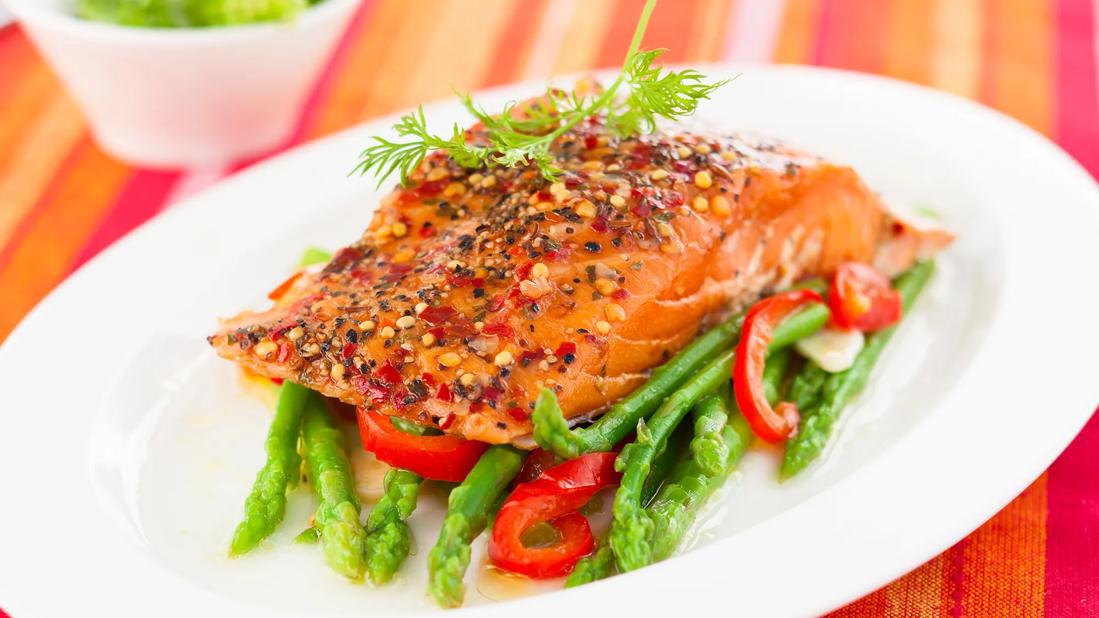Foods To Eat on an Insulin Resistance Diet
Focus on eating more whole grains, lean proteins, fruits and vegetables, and fewer processed foods and saturated fats

An insulin resistance diagnosis serves as a warning. It signals issues with your body’s ability to balance blood glucose (sugar), a situation that could eventually escalate to prediabetes and Type 2 diabetes.
The good news? It’s often possible to reverse insulin resistance with changes in your day-to-day habits, particularly involving the food you eat.
Let’s learn more from registered dietitian Beth Czerwony, RD, LD.
What is an insulin resistance diet?
A healthy insulin resistance diet is high in natural, fiber-rich foods that limit blood sugar spikes and low in not-so-nutritious processed and sugary foods. It’s a way of eating that’s less taxing on your insulin production system.
“If you’re insulin resistant, your goal should be eating foods that require less insulin for processing,” explains Czerwony. “It’s about giving your body a better chance to do what it needs to do.”
Best foods for insulin resistance
So, what should be in your grocery cart if you’re looking to address insulin resistance? Czerwony suggests adding these items to your shopping list:
- Whole-grain foods: Whole grains qualify as complex carbohydrates, which take longer to digest. This slower process helps limit blood sugar spikes. Food like oatmeal, brown rice, quinoa and whole-wheat bread qualify as whole-grain products.
- Fish: There’s evidence that omega-3 fatty acids can reduce insulin resistance — many types of fish are loaded with omega-3s. Good sources include salmon, herring and Albacore tuna.
- Lean proteins: The protein in leaner meat or plant-based products improves your blood glucose levels by slowing digestion. Meat options include poultry (like chicken and turkey) and less-fatty cuts of beef and pork. Want to go plant-based? Try tofu or tempeh.
- Non-starchy vegetables: Try to fill half your plate with garden goodies such as asparagus, broccoli, carrots, cauliflower, leafy greens and a rainbow array of peppers. These high-fiber foods help slow digestion to stabilize blood sugar.
- Fruits:The ideal fruit for an insulin resistance diet is both high in fiber and scores lower on the glycemic index, a measure of how food affects blood sugar. Examples include apples, pears, grapefruit and various berries (like blueberries, blackberries and strawberries).
- Beans and legumes: Various beans and legumes rank as some of the highest-fiber foods in the grocery store — and as we mentioned, that’s a good thing for insulin resistance.
Foods to avoid with insulin resistance
Certain foods qualify as “heavy hitters” when it comes to loading your bloodstream with glucose, a no-no with insulin resistance. “Removing these items from your diet can make a significant difference,” emphasizes Czerwony.
The list includes:
- Ultra-processed foods: Ever read the nutrition label on pre-packaged foods? It often shows high amounts of fats, sugars, sodium and other ingredients that can worsen the effects of insulin resistance.
- Saturated fats: A diet high in fatty meats, fried food, cheese and other edible items high in saturated fat can build insulin resistance and contribute to the eventual development of Type 2 diabetes.
- Carb-heavy foods: Eating food classified as “refined carbohydrates” causes quick spikes in blood sugar levels. This would include common pantry items like white bread, white rice and pasta.
- Sugary drinks: A can of soda typically contains about 40 grams of sugar. That’s 10 teaspoons of sugar — more than the suggested daily limit recommended by the American Heart Association. It’s a similar story with sports drinks and other sweetened beverages.
- Sweet treats: Cake, cookies, candy and other dessert items tend to be loaded with glucose-raising sugar. (Hence the “sweet” before treat.) Baked goods also tend to use white flour, a refined carb that can drive up blood glucose.
- Alcohol: Tipping back too many beers or other alcoholic drinks can upend your body’s ability to regulate insulin, leading to increased insulin resistance.
Best diet for insulin resistance
If you’re looking for an overall eating plan to address insulin resistance, your best bet is the Mediterranean diet. It’s a nutrition strategy built around eating plant-based foods, fish and healthier fats.
The diet also de-emphasizes many items on the insulin resistance foods-to-avoid list, like processed foods and saturated fats.
“It’s a healthy and nutritious eating concept that’s sustainable for the long term,” explains Czerwony. “When it comes to insulin resistance, it hits the mark across the board with its focus on whole grains, vegetables, fruit, fish and lean protein.”
The American Diabetes Association recommends a Mediterranean-style eating plan for blood glucose management. It also suggests the DASH diet and adopting plant-based vegetarian or vegan approaches.